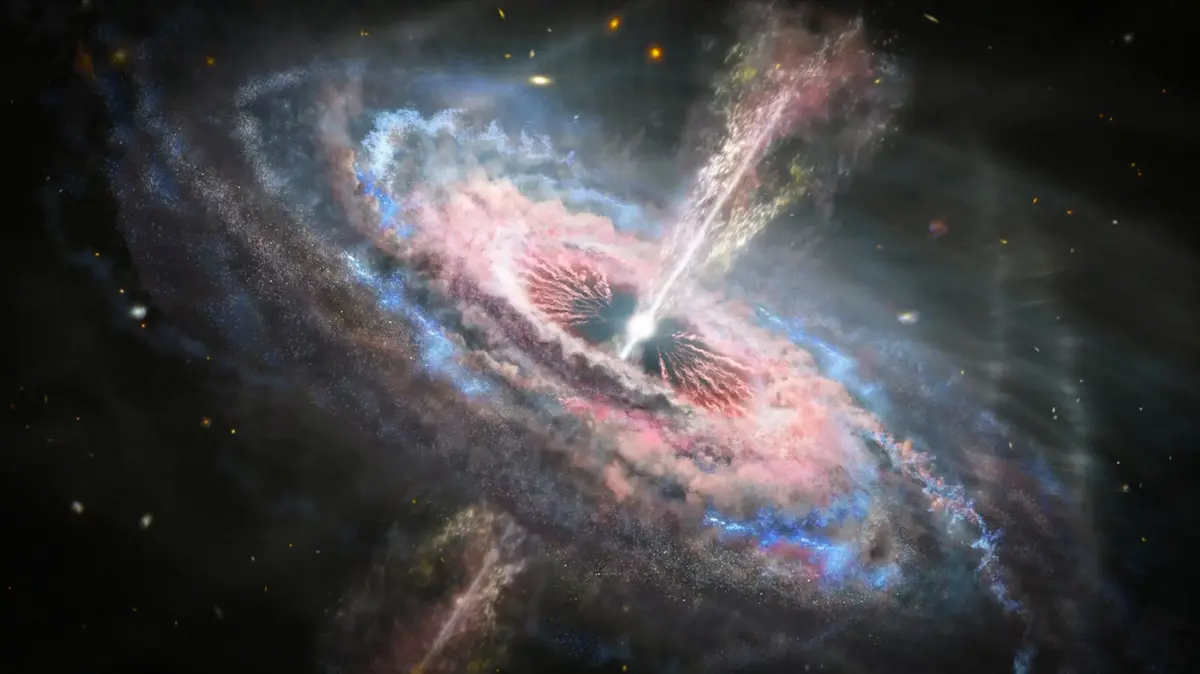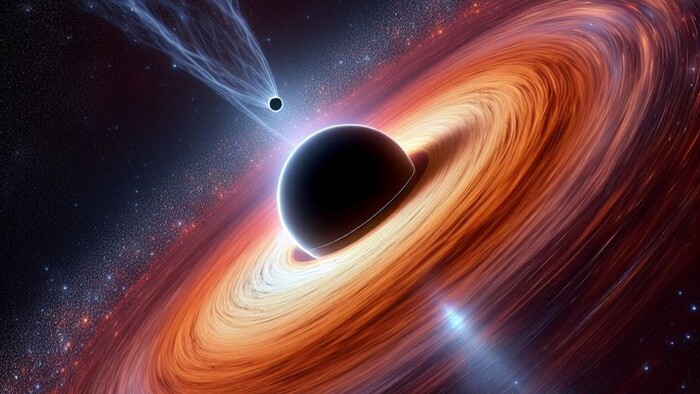European scientists made an extraordinary observation in space with an ESO telescope: the beginning of a galaxy's process of death.
Everything is ephemeral: Even the huge accumulations of stars and planetary systems in the
universe
- better known as galaxies like our Milky Way - succumb to an aging process in a certain way ... until they actually
"die"
in the end, according to technical jargon
.
The reason: From a certain point in time they can no
longer form
new
stars
: their
death sentence
.
Since the life of a
sun
is also finite, the life of a
galaxy
goes out
together with the gradually dying light of its
stars
- at least that's the theory.
The problem: So far,
astronomers have been
groping
in the dark, which could be the trigger for a galaxy no longer being able to form stars.
Dying Galaxy: Until now, the process has never been observed
Although there is already evidence of active or inactive
galaxies
,
scientists
have not yet been able to observe
the actual beginning of the
dying process
, which has led to a number of theories.
For example, it has been suggested that the
gravitation of
extremely massive black holes in the center of the galaxies could blow out gases that are
necessary
for the formation of
stars
.
However, an accidental discovery with a telescope from the
European Southern Observatory (ESO)
brought
space researchers
to a new explanation.
Because: As a press release shows, a team of scientists from the British University of Durham and the French Saclay Research Center recently managed for the first time to “look at the beginning” of the
dying process
“in a
galaxy
far, far away
”.
The observed research object is a
galaxy
about nine billion light years away
, which is in a sense
dying
.
Its not very sonorous name:
"ID2299"
.
"This is the first time that we
have observed
a typical massive star-forming galaxy in the distant
universe
that is about to extinguish due to a tremendous cold gas ejection," Annagrazia Puglisi of Durham University is quoted in the press release.
The galaxy loses gas annually with the mass of about 10,000 suns
This "eject" shows up in the form of a huge
gas fountain
through which the
galaxy
an annual amount of about
10,000 suns
into the
All
overshoots - much as would a human blood and thus its lifeblood lose.
Metaphorically speaking, one could say that the
researchers
can see through the telescope how “ID2299” is bleeding to death.
The
scientists
suspect
a collision of two galaxies, which ultimately merged to form “
ID2299
”,
as the trigger for the great
loss of gas
.
"Our study suggests that gas ejections are generated by mergers and that winds and tidal tails can look very similar," study co-author Emanuele Daddi of CEA-Saclay is
quoted in
the
ESO
press release
.
Observation could lead to a completely new understanding of dying galaxies
So-called “tidal tails” are star and gas regions that
extend
from a
galaxy
into
space
and that, according to scientific understanding, are created by gravitational forces between neighboring galaxies.
However, as a result of the new observations, this understanding could now change.
For objects previously identified by researchers as “winds” of distant galaxies could therefore also be
tidal
tails that
eject
gas
.
"That could mean that we have
to revise
our understanding of how
galaxies
die," explains Emanuele Daddi in the press release.







/cloudfront-eu-central-1.images.arcpublishing.com/prisa/2C5HI6YHNFHDLJSBNWHOIAS2AE.jpeg)




